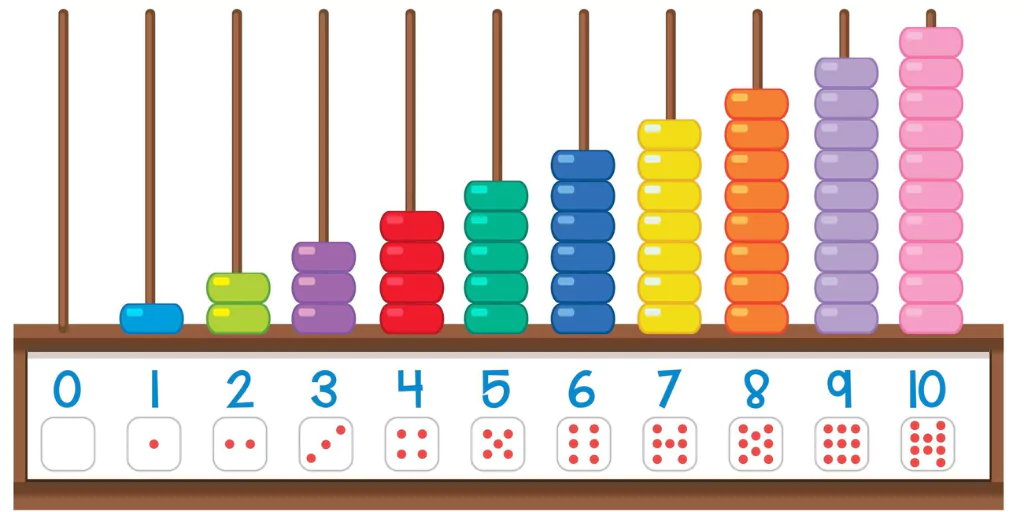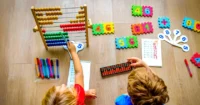Ever stared at your calculator and wondered if there was a simpler, more hands-on way to understand math? Long before digital technology, ancient civilisations used a clever tool made of wooden beads and rods to perform complex calculations — that tool is the abacus, often considered humanity’s first true computing device.
You’re about to discover how this ancient tool not only makes basic arithmetic surprisingly intuitive but might boost your mental math abilities better than modern methods.
The beauty of an abacus lies in its elegant simplicity – no batteries, no software updates, just a physical representation of numbers that you can manipulate with your fingers.
But here’s what most people don’t realise about this ancient calculator: mastering it might give you mathematical superpowers that even your smartphone can’t match.
1. The Ancient Origins and Evolution of the Abacus
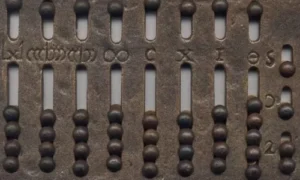
A. From Sumerian Counting Boards to Modern Tools
You might be surprised to know that the abacus you’re learning to use has been around for thousands of years! Back in ancient Mesopotamia (around 2700 BCE), your ancestors used dust-covered counting boards to track trade goods and taxes. These simple boards evolved into the beaded tool you recognise today.
B. How the Abacus Spread Across Different Civilisations
When you examine different abacus styles from around the world, you’re witnessing cultural exchange in action. The Chinese suan pan you might have seen with 2/5 bead arrangements? That travelled to Japan and became the soroban you might use in class. Each culture you explore adapted this handy math tool to fit their number systems.
2. Understanding the Basic Structure of an Abacus
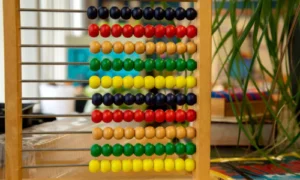
A. The Frame, Rods, and Beads Explained
When you first look at an abacus, you’ll notice it consists of a frame with rods running parallel to each other. The beads, which are the main attraction, are held in place by these rods. Each rod represents a place value in your calculation (ones, tens, hundreds). The beads slide up and down to represent numbers, with each bead on the upper deck typically worth five times more than those on the lower deck.
B. Different Types of Abacuses Around the World
You’ll find abacuses come in various designs depending on where you look. The counting frames differ not just in appearance but in how you use them. Some have two beads above the divider, others have more. These differences aren’t just aesthetic—they reflect the counting systems and mathematical approaches of different cultures, making each abacus uniquely suited to its region’s calculation needs.
3. How an Abacus Works
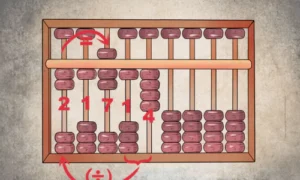
A. The Mathematical Principles Behind the Abacus
Our number system is physically represented when you look at an abacus. Think of each column as a place value – ones, tens, hundreds, just like when you write numbers on paper. The genius of the abacus is how it makes abstract math concepts tangible.
B. Value Assignment of Beads and Rows
Each bead has a specific value based on its position. In the standard Chinese abacus, the beads above the divider (heaven beads) are worth 5 units, while those below (earth beads) count as 1 unit each. You can instantly visualise numbers by positioning these beads.
4. Learning to Use an Abacus Step-by-Step
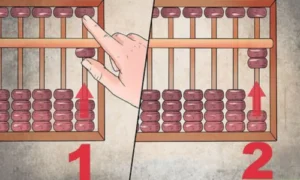
A. Proper Hand Positioning and Finger Techniques
You’ll want to hold your hand comfortably above the abacus with your thumb and index finger ready for action. Your thumb moves beads up toward the beam, while your index finger brings them down. Keep your wrist relaxed but stable – cramping happens when you’re too tense!
B. Setting Up Numbers on Your Abacus
Start with a clean slate by pushing all beads away from the centre beam. To represent a number like 253, you’ll move beads in the hundreds, tens, and units columns. Each column shows a digit of your number. Prior to working on more complex numbers, try putting up simpler ones.
5. Benefits of Learning to Use an Abacus in the Digital Age

A. Developing Strong Mental Math Skills
Learning to use an abacus helps in developing strong mental math skills by training the brain to visualise numbers and perform calculations mentally, which gradually leads to faster thinking, sharper Memory and problem-solving skills independent of a calculator.
B. Building Concentration and Focus Abilities
Using an abacus regularly builds concentration and focus abilities, as each calculation requires careful attention, coordination, and mental discipline, helping learners stay attentive not just in math but in all areas of study.
6. Choosing Your First Abacus
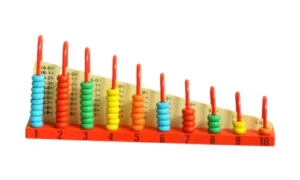
A. Materials and Quality Considerations
When choosing an abacus, it’s important to consider the materials and overall quality, as a sturdy frame, smooth-moving beads, and durable construction ensure better usability, longer lifespan, and a more comfortable learning experience for beginners.
B. Size and Bead Count for Beginners
For beginners, selecting an abacus with a standard size and a suitable bead count—typically 13 rods with 5 beads each—is ideal, as it provides enough scope for learning basic arithmetic without overwhelming the learner.
Conclusion
The abacus is an example of human creativity that has endured over time. From its ancient origins in Mesopotamia to its evolution across various cultures, this simple counting device has played a crucial role in mathematical education for centuries. By understanding its structure—with beads arranged on rods within a frame—you can appreciate how this elegant tool allows for complex calculations through simple physical movements. Learning how an abacus works not only connects you with mathematical traditions across civilisations but also provides a tangible way to visualise number operations.
Whether you’re a curious beginner or someone looking to explore alternative calculation methods, the abacus offers a unique hands-on approach to mathematics that engages your mind differently than digital calculators. Consider trying one yourself—you might be surprised at how this ancient tool can sharpen your mental arithmetic and provide a deeper understanding of number relationships. Your journey with the abacus can be both a practical skill and a fascinating window into the history of human problem-solving.


